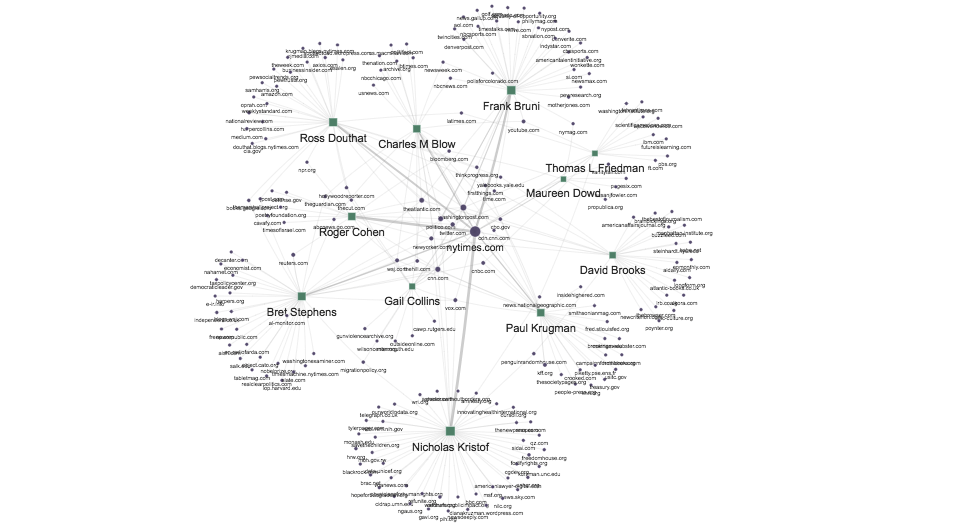
When looking at communities of writers and thinkers, a fundamental question is who is talking about whom. For academics, we look at citiations networks. For bloggers and social media personalities, we look at hyperlink or follower networks.
I applied this framework to another community of writers and thinkers: The New York Times Op-Ed columnists. To do this, I collected the ten most recent articles by each of the eleven writers. I then extracted all of the hyperlinks from the articles to create the interactive graph below (full screen version here). The data as well as the code I used to collect and analyze the links are available on github.
Looking at this graph a few things popped out for me. First, it’s clear which outlets are at the center of the conversation. The New York Times was (not surprisingly) cited by the all eleven columnists, Washington Post by nine, The Atlantic by seven, and CNN by seven. Taken together, these outlets are the “mainstream media”, at least from the perspective of the Times’ Op-Ed columnists.
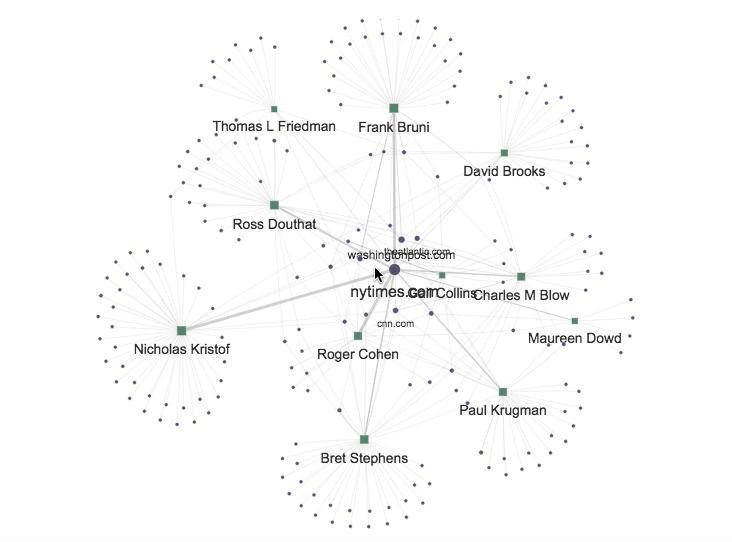
Second, startup media outlets are in the periphery of the network. Vox was cited by four of the columnists, while Business Insider, Buzzfeed, and Axios were cited by one columnist each. It will be interesting to see if any of these outlets shift into the center of the network over time.
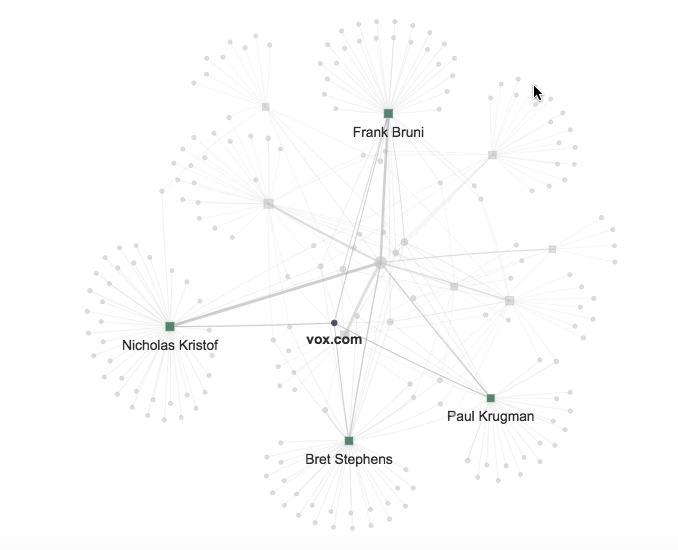
Third, there are clear differences in how the columnists approach linking. Nicholas Kristof linked out the most (92 links) and to the widest range of sources (51 different sites). Maureen Dowd took a different approach, linking out only 17 times to 8 different sources.
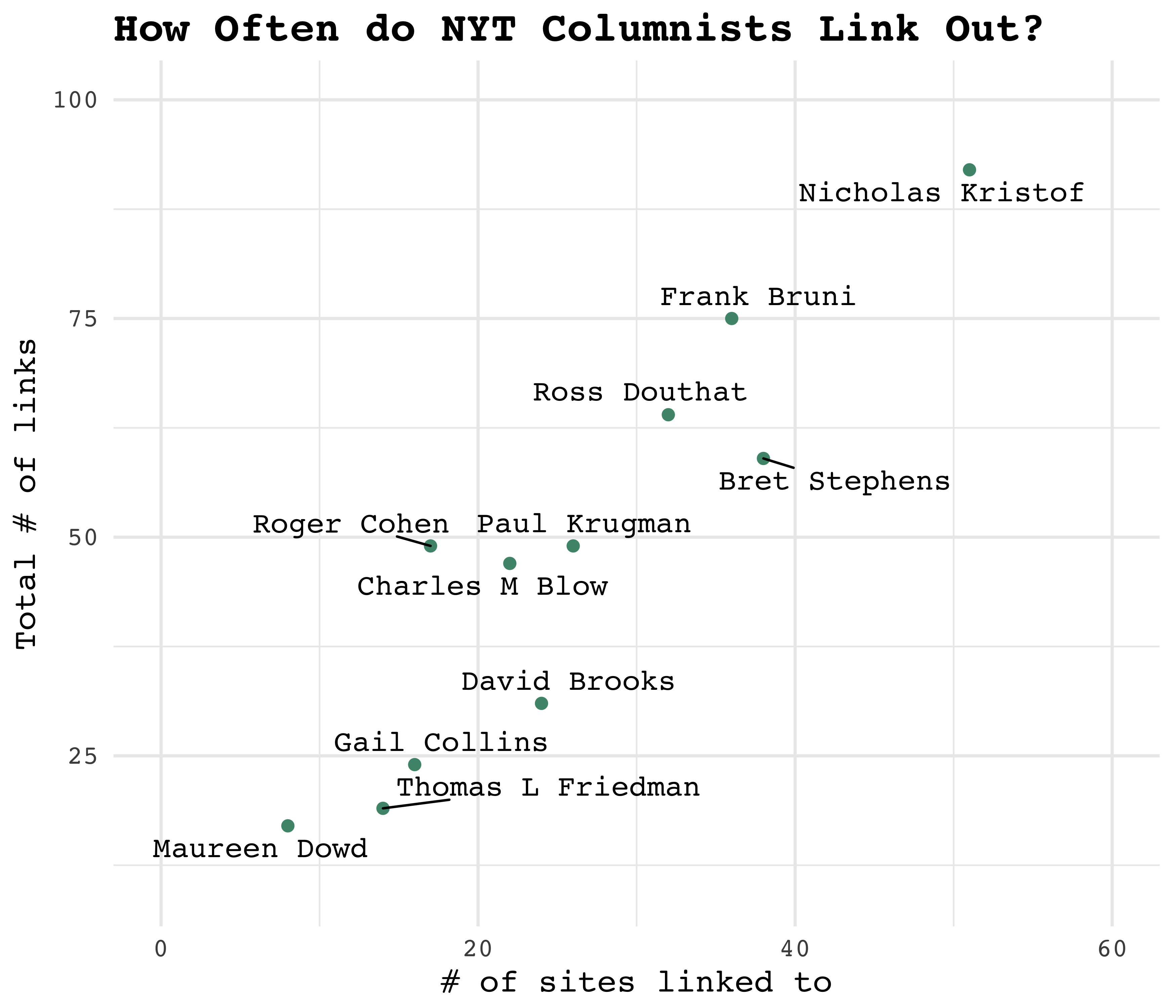
Finally, Nicholas Kristof’s subnetwork is the most distinct. Of the sites he linked to only 16% were also linked to by other columnists. Conversely, Roger Cohen’s subnetwork is the most embedded in the graph; 71% of his linked sites were also linked to by other columnists.
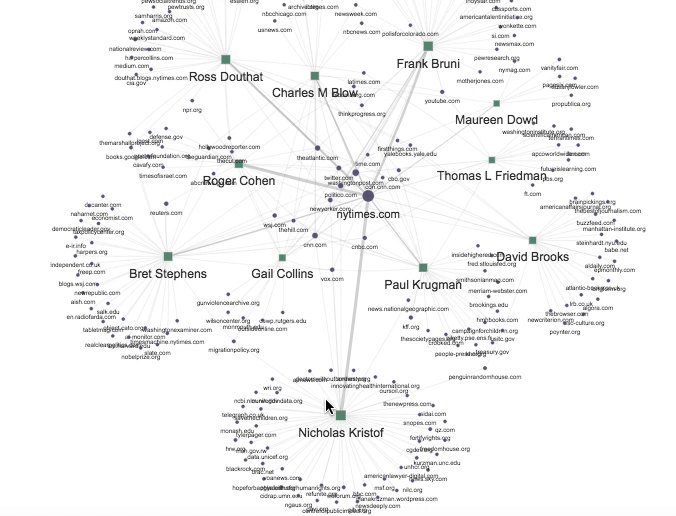
For all of these results, keep in mind that we’re looking at a limited and time-bound sample of articles. When I get a bit of time to figure out Selelium, I’m hoping to collect a year’s worth of data. More to come!